Alexandrite
Alexandrite is a rare gemstone that belongs to the chrysoberyl family. It was first discovered in 1830 in the Ural Mountains of Russia and was named after Czar Alexander II. Alexandrite is known for its unique color-changing property, where it appears green in daylight or fluorescent light and red or purple in incandescent light.
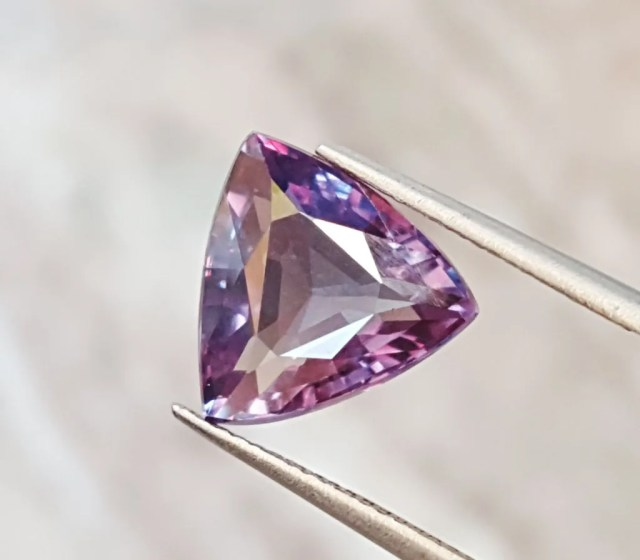
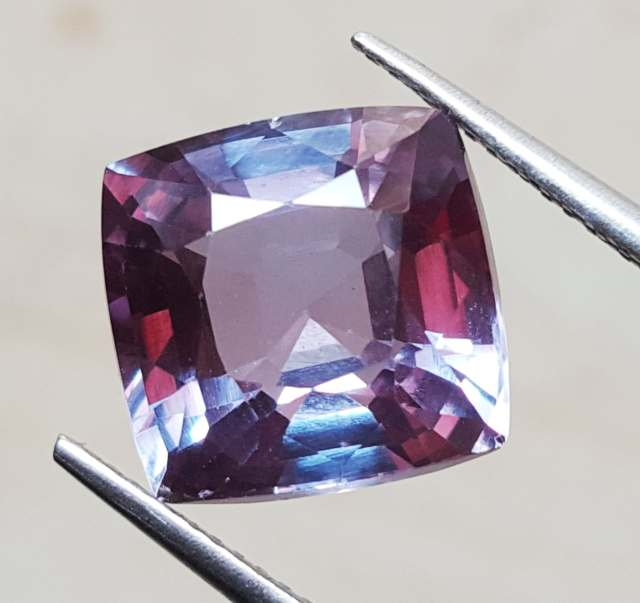
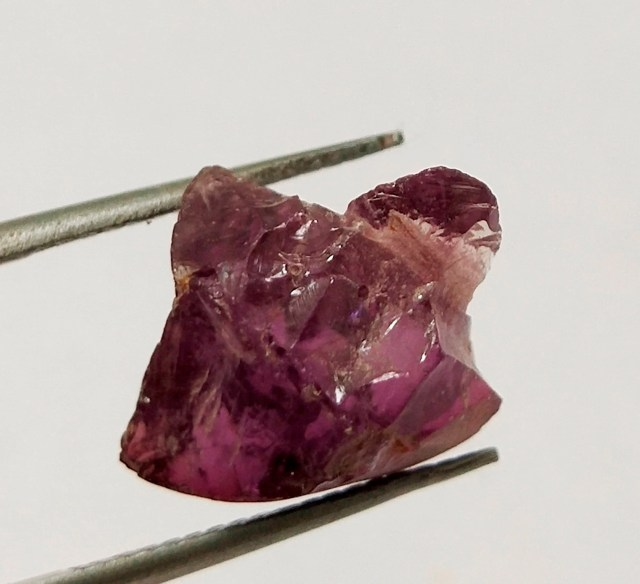
The color change occurs due to the presence of chromium in the crystal structure of the gemstone, which absorbs different wavelengths of light depending on the type of light source. The intensity of the color change depends on the quality and clarity of the stone.
Today, Alexandrite is also found in Sri Lanka, East Africa, Brazil, and Madagascar. Due to its rarity and unique properties, Alexandrite is highly prized by collectors and jewelry enthusiasts. It is also the birthstone for June.
Contents
- Alexandrite formation and characteristics
- Alexandrite Occurrence
- Alexandrite associations with other minerals and rocks
- Alexandrite Deposits and Mining
- Major Alexandrite mining locations worldwide
- Alexandrite physical and optical properties
- Alexandrite gemstone evaluation and grading based on geologic factors
- Chemical composition of Alexandrite
- Alexandrite grading (Color, Clarity, Cut, Carat weight)
- Evaluating Alexandrite Quality
- Uses of Alexandrite
- Summary of key points of Alexandrite
- Famous Alexandrite Gemstones
- Alexandrite FAQ
Alexandrite formation and characteristics
Alexandrite is a variety of chrysoberyl, which is a mineral composed of beryllium, aluminum, and oxygen. The unique color-changing property of Alexandrite is due to the presence of trace amounts of chromium in the crystal structure of the gemstone.
Alexandrite is formed in metamorphic rocks under high temperature and pressure conditions. The mineral is typically found in association with other minerals such as mica, feldspar, and quartz. The largest deposits of Alexandrite are found in Russia, Sri Lanka, East Africa, Brazil, and Madagascar.
The color-changing property of Alexandrite is due to its ability to absorb different wavelengths of light depending on the type of light source. In daylight or fluorescent light, Alexandrite appears green, while in incandescent light, it appears red or purple. The intensity of the color change depends on the quality and clarity of the stone.
Alexandrite has a hardness of 8.5 on the Mohs scale, making it a durable gemstone suitable for jewelry. The stone is also relatively rare, which makes it highly prized by collectors and jewelry enthusiasts. The most valuable Alexandrite stones are those with a strong and distinct color change, as well as those with good clarity and a well-defined crystal structure.
Alexandrite Occurrence

Alexandrite
The first and most famous source of Alexandrite was the Ural Mountains in Russia, where it was first discovered in the 1830s. The Russian deposits, particularly those in the mines of Ekaterinburg and Tokovaya, were the primary source of Alexandrite for many years and produced some of the finest and most valuable stones.
Today, Alexandrite is also found in other locations around the world, including Sri Lanka, East Africa, Brazil, and Madagascar. Sri Lanka produces some of the highest quality Alexandrite, with stones that exhibit a strong and distinct color change. In Brazil, the most significant source of Alexandrite is the Hematita mine in Minas Gerais.
Madagascar has also become an important source of Alexandrite in recent years, with stones that are known for their intense color change and good clarity. In East Africa, the deposits in Tanzania and Zambia have produced some of the largest and most valuable Alexandrite stones in recent years.
Despite being found in several locations around the world, Alexandrite remains a relatively rare gemstone. High-quality stones with a strong and distinct color change, good clarity, and well-defined crystal structure are highly prized by collectors and jewelry enthusiasts.
Alexandrite associations with other minerals and rocks
Alexandrite is a variety of chrysoberyl, which is a mineral composed of beryllium, aluminum, and oxygen. It is typically found in metamorphic rocks, particularly those formed from mica, feldspar, and quartz.
In the Ural Mountains of Russia, Alexandrite is found in association with other minerals such as biotite mica, plagioclase feldspar, and orthoclase feldspar. The primary host rock is a biotite gneiss, which is a metamorphic rock that has been subjected to high temperature and pressure conditions.
In Sri Lanka, Alexandrite is typically found in alluvial deposits that have been eroded from the surrounding rocks. The primary host rocks in Sri Lanka are pegmatites, which are coarse-grained igneous rocks that are rich in minerals such as feldspar and quartz.
In Brazil, Alexandrite is found in association with other minerals such as hematite, magnetite, and corundum. The primary host rocks in Brazil are mica schists and gneisses, which are metamorphic rocks that have been subjected to high temperature and pressure conditions.
In Madagascar, Alexandrite is found in association with other minerals such as zircon, garnet, and tourmaline. The primary host rocks in Madagascar are pegmatites and metamorphic rocks.
The occurrence of Alexandrite in different types of rocks and in association with different minerals suggests that the gemstone forms under a variety of geological conditions. However, the exact processes that lead to the formation of Alexandrite are still not fully understood and remain a subject of ongoing research.
Alexandrite Deposits and Mining

The largest and most famous deposits of Alexandrite were found in the Ural Mountains of Russia, particularly in the mines of Ekaterinburg and Tokovaya. These mines produced some of the finest and most valuable Alexandrite stones, and were the primary source of the gemstone for many years.
Today, Alexandrite is also found in other locations around the world, including Sri Lanka, East Africa, Brazil, and Madagascar. Mining techniques vary depending on the location and type of deposit.
In Russia, Alexandrite was mined from hard rock deposits using traditional underground mining methods. The ore was extracted from the mine and then transported to processing facilities where it was crushed and sorted to extract the valuable gemstones.
In Sri Lanka, Alexandrite is typically found in alluvial deposits, which are formed from eroded rocks and minerals. Mining in Sri Lanka involves digging pits or shafts in the alluvial deposits and using traditional manual methods such as panning and sluicing to extract the gemstones.
In Brazil, Alexandrite is also found in alluvial deposits, as well as in hard rock deposits. Mining in Brazil involves both traditional manual methods and modern mechanized techniques, depending on the location and type of deposit.
In Madagascar, Alexandrite is typically found in pegmatites and metamorphic rocks. Mining in Madagascar involves digging pits or shafts in the rocks and using manual methods to extract the gemstones.
Due to the rarity and high value of Alexandrite, mining operations are often small-scale and focused on high-quality stones. The gemstone is also often found in association with other valuable minerals, which can make mining operations more profitable. However, sustainable mining practices are becoming increasingly important to ensure the long-term viability of Alexandrite deposits and to minimize the environmental impact of mining activities.
Major Alexandrite mining locations worldwide

The primary source of Alexandrite historically has been the Ural Mountains in Russia, where it was first discovered in the 1830s. Today, however, the gemstone is found in several locations around the world. Some of the major Alexandrite mining locations are:
- Russia: The Ural Mountains in Russia are still one of the primary sources of Alexandrite, although production has declined significantly in recent years. The mines of Ekaterinburg and Tokovaya were the most important sources of Alexandrite in Russia.
- Sri Lanka: Sri Lanka produces some of the highest quality Alexandrite in the world, with stones that exhibit a strong and distinct color change. The gemstone is typically found in alluvial deposits, and mining operations are focused in the Ratnapura district.
- Brazil: Brazil is another important source of Alexandrite, with the most significant deposits found in the Hematita mine in Minas Gerais. The gemstone is typically found in alluvial deposits, as well as in hard rock deposits.
- Madagascar: Madagascar has become an important source of Alexandrite in recent years, with stones that are known for their intense color change and good clarity. The gemstone is typically found in pegmatites and metamorphic rocks.
- Tanzania: Tanzania has produced some of the largest and most valuable Alexandrite stones in recent years, with mining operations focused in the Tunduru district.
- Zambia: Zambia is another important source of large Alexandrite stones, with mining operations focused in the Copperbelt province.
Other locations where Alexandrite is found include India, Myanmar, Zimbabwe, and Mozambique. However, the gemstone is relatively rare and high-quality stones are highly prized, regardless of their country of origin.
Alexandrite physical and optical properties

Alexandrite is a fascinating gemstone because it exhibits a remarkable optical phenomenon known as color change. Its physical and optical properties include:
- Hardness: Alexandrite is a relatively hard gemstone, with a Mohs hardness of 8.5 on a scale of 1 to 10. This makes it durable and suitable for use in jewelry.
- Refractive Index: The refractive index of Alexandrite ranges from 1.746 to 1.755, which is relatively high. This gives the gemstone a bright and lively appearance.
- Birefringence: Alexandrite has a moderate birefringence of 0.008 to 0.010, which means that it splits light into two rays as it passes through the gemstone.
- Dispersion: Alexandrite has a relatively low dispersion of 0.015, which means that it does not exhibit significant fire or spectral color separation.
- Color Change: The most notable property of Alexandrite is its color change phenomenon, which occurs when the gemstone is viewed under different lighting conditions. In daylight or fluorescent light, Alexandrite appears greenish-blue to blue-green, while in incandescent light, it appears reddish-purple to purplish-red.
- Pleochroism: Alexandrite exhibits strong pleochroism, which means that it displays different colors when viewed from different angles. Typically, Alexandrite appears greenish-blue or green when viewed from one direction, and reddish-purple or purplish-red when viewed from another direction.
Overall, Alexandrite’s combination of high hardness, bright refractive index, moderate birefringence, low dispersion, and remarkable color change phenomenon make it a highly prized and valuable gemstone.
Alexandrite gemstone evaluation and grading based on geologic factors

The quality and value of an Alexandrite gemstone is determined by several factors, including its color change, clarity, cut, and size. However, the geologic factors that contribute to the gemstone’s formation and appearance are also important considerations in evaluating and grading an Alexandrite.
- Origin: The country of origin can significantly impact the value of an Alexandrite, with Russian stones being the most highly prized due to their historical significance and exceptional color change.
- Color Change: The quality and degree of color change is one of the most important factors in evaluating an Alexandrite. A strong and distinct color change from green to red is highly desirable, while weaker or less pronounced color change can lower the value of the gemstone.
- Clarity: The clarity of an Alexandrite can range from eye-clean to heavily included. Stones with fewer inclusions and greater transparency are more highly valued.
- Cut: The cut of an Alexandrite can significantly impact its appearance and value. Well-cut stones with good symmetry and proportions will exhibit maximum color change and brightness, and will command a higher price.
- Size: Like most gemstones, the value of an Alexandrite increases with size. However, larger stones that exhibit a strong and distinct color change are relatively rare, and can command a premium price.
- Geological factors: Alexandrite is formed in specific geological conditions, and the quality of the deposit can impact the gemstone’s color and clarity. For example, stones from the original Russian deposit are known for their intense color change and good clarity, while stones from other deposits may exhibit weaker or less distinct color change, or may be more heavily included.
Overall, an Alexandrite gemstone’s value and grade is determined by a combination of these factors, with the strength and distinctness of its color change being the most important consideration.
Chemical composition of Alexandrite
Alexandrite is a variety of the mineral chrysoberyl, with a chemical composition of BeAl2O4. The gemstone’s characteristic color change phenomenon is due to the presence of trace amounts of chromium, which gives the stone a green color in daylight or fluorescent light, and a red or purplish-red color in incandescent light. The chromium ions replace some of the aluminum ions in the crystal lattice, creating color centers that are responsible for the gemstone’s unique optical properties.
In addition to chromium, Alexandrite may also contain other trace elements such as titanium, iron, and vanadium. The exact chemical composition of Alexandrite can vary depending on the deposit and the specific geological conditions in which it formed. However, the presence of chromium is a defining characteristic of Alexandrite and is essential to its color change phenomenon.
Alexandrite grading (Color, Clarity, Cut, Carat weight)

Alexandrite grading is based on several factors, including color, clarity, cut, and carat weight. Here’s a breakdown of how each of these factors is evaluated:
- Color: The most important factor in grading Alexandrite is the intensity and quality of its color change. The best specimens exhibit a strong, distinct color change from green to red or purplish-red, with a pure and vivid hue in both colors. Stones that exhibit a weak or indistinct color change, or that have a brownish or grayish hue, will be of lower quality and value.
- Clarity: Alexandrite is expected to have good clarity, with minimal inclusions that don’t significantly affect its transparency or brilliance. Stones that are heavily included or have visible fractures or other defects will be of lower quality.
- Cut: Alexandrite should be well-cut with good symmetry and proportions to maximize its color change and brilliance. The ideal cut will vary depending on the individual stone’s shape and size, but in general, Alexandrite should be cut to display its color change to its best advantage.
- Carat Weight: Alexandrite is a relatively rare and valuable gemstone, and larger stones are more valuable than smaller ones. However, the quality of the color change and clarity are more important factors than carat weight, so a smaller stone with excellent color change and clarity may be more valuable than a larger stone with lower quality.
Overall, the most valuable and desirable Alexandrite stones are those that exhibit a strong and distinct color change, have good clarity and a well-cut shape, and are of a significant size. Stones that are lighter in color, heavily included, poorly cut, or small in size will be of lower quality and value.
Evaluating Alexandrite Quality
Evaluating the quality of Alexandrite involves considering several factors, including the gemstone’s color change, clarity, cut, and size. Here’s a closer look at each of these factors:
- Color Change: The quality and degree of color change is the most important factor in evaluating Alexandrite. The best specimens will exhibit a strong and distinct color change from green to red or purplish-red, with a pure and vivid hue in both colors. Stones that show a weak or indistinct color change, or that have a brownish or grayish hue, will be of lower quality.
- Clarity: Alexandrite should have good clarity, with minimal inclusions that don’t significantly affect its transparency or brilliance. Stones that are heavily included or have visible fractures or other defects will be of lower quality.
- Cut: Alexandrite should be well-cut with good symmetry and proportions to maximize its color change and brilliance. The ideal cut will vary depending on the individual stone’s shape and size, but in general, Alexandrite should be cut to display its color change to its best advantage.
- Size: Like most gemstones, the value of Alexandrite increases with size. However, larger stones that exhibit a strong and distinct color change are relatively rare, and can command a premium price.
In addition to these factors, there are some additional considerations to keep in mind when evaluating Alexandrite quality:
- Origin: The country of origin can also impact the value of an Alexandrite, with Russian stones being the most highly prized due to their historical significance and exceptional color change.
- Treatment: While most Alexandrite is untreated, there are some stones that have been heat-treated or irradiated to enhance their color. Natural, untreated Alexandrite is generally considered more valuable and desirable than treated stones.
Overall, the best-quality Alexandrite stones will exhibit a strong and distinct color change, have good clarity and a well-cut shape, and be of a significant size. Stones that are lighter in color, heavily included, poorly cut, small in size, or treated will be of lower quality and value.
Uses of Alexandrite

Alexandrite is primarily used as a gemstone in jewelry due to its unique optical properties and color-changing abilities. Here are some of the main uses of Alexandrite:
- Jewelry: Alexandrite is commonly used in rings, necklaces, earrings, and other types of jewelry. It is often set in precious metals such as gold or platinum to enhance its beauty and durability.
- Collecting: Some collectors prize Alexandrite specimens for their rarity and historical significance, particularly those from Russia.
- Decorative objects: Small Alexandrite specimens or faceted stones may be used in decorative objects such as paperweights or figurines.
- Investment: Due to its rarity and beauty, high-quality Alexandrite can be a valuable investment for those interested in collecting gemstones.
Overall, Alexandrite is primarily valued for its beauty and rarity as a gemstone, and its unique color-changing abilities make it a prized addition to many jewelry collections.
Summary of key points of Alexandrite
- Alexandrite is a rare gemstone that exhibits a unique color-changing effect, appearing green in natural daylight and red or purplish-red in incandescent light.
- Alexandrite is a variety of chrysoberyl mineral and is formed under specific geological conditions that involve high heat and pressure, as well as the presence of specific trace elements.
- The most significant Alexandrite deposits are found in Russia, but other deposits are also found in countries such as Brazil, Sri Lanka, and Tanzania.
- The quality of Alexandrite is determined by several factors, including the intensity and clarity of its color change, the clarity of the stone, the quality of its cut, and its carat weight.
- Alexandrite is primarily used as a gemstone in jewelry due to its unique optical properties and color-changing abilities.
- Some collectors prize Alexandrite specimens for their rarity and historical significance, particularly those from Russia.
- Alexandrite is also believed by some to have healing properties, although these claims are not supported by scientific evidence.
Famous Alexandrite Gemstones
- Smithsonian Alexandrite: This is one of the largest and most valuable Alexandrite gemstones in the world, weighing 65.08 carats. It was discovered in Sri Lanka in the early 1900s and is now part of the National Gem Collection at the Smithsonian Museum in Washington, D.C.
- Russian Alexandrites: Many of the world’s most famous and valuable Alexandrites come from Russia, where the gemstone was first discovered. These include the Alexandrites from the Ural Mountains, which are highly prized for their intense color change and high clarity.
- Allen-Viana Alexandrite: This rare Alexandrite was discovered in Brazil in the 1990s and is notable for its large size (over 60 carats) and exceptional color change.
- Diadem Alexandrite: This Alexandrite was discovered in the Ural Mountains in the 1800s and was set into a tiara that belonged to the Russian royal family. It is now part of a private collection.
- Rajaratnam Alexandrite: This Alexandrite, discovered in Sri Lanka in the 1990s, is named after its owner and is notable for its large size (over 100 carats) and exceptional clarity and color change.
Alexandrite FAQ
Q: What is the origin of the name Alexandrite?
A: Alexandrite is named after Tsar Alexander II of Russia, who was on the throne at the time of the gemstone’s discovery in the 1830s.
Q: Can Alexandrite be synthetic or lab-created?
A: Yes, Alexandrite can be created in a laboratory using various methods, including the flux, Czochralski, and hydrothermal processes.
Q: What is the most valuable color for Alexandrite?
A: The most valuable Alexandrite color is a strong and distinct color change from green to red or purplish-red, with a pure and vivid hue in both colors.
Q: Is Alexandrite a birthstone?
A: Alexandrite is one of the birthstones for the month of June, along with pearl and moonstone.
Q: Can Alexandrite be worn daily?
A: Yes, Alexandrite is a durable gemstone with a hardness of 8.5 on the Mohs scale, making it suitable for daily wear. However, it is still important to take care when wearing and cleaning Alexandrite jewelry.
Q: Does Alexandrite have any special powers or meaning?
A: Some people believe that Alexandrite has healing properties and can be used to promote physical and emotional wellbeing. In addition, it is sometimes associated with qualities such as creativity, intuition, and balance.
Q: What is the rarest Alexandrite variety?
A: The rarest Alexandrite variety is the one with the strongest and most vivid color change, combined with a high degree of clarity and a large size. Such specimens are exceptionally rare and can command a high price.
Q: How can I care for my Alexandrite jewelry?
A: To care for your Alexandrite jewelry, it is recommended to clean it gently with warm, soapy water and a soft brush, and to avoid exposing it to harsh chemicals, extreme temperatures, or sudden changes in temperature.
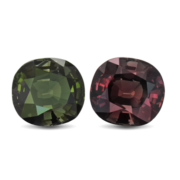
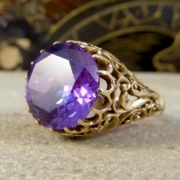
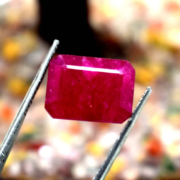


Leave a Reply
Want to join the discussion?Feel free to contribute!